Trout Fishing
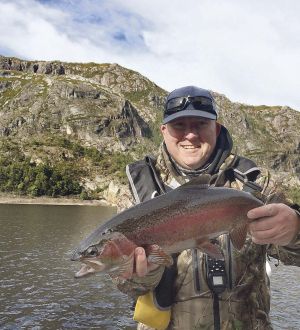 Presented from Issue 110, June 2014
Presented from Issue 110, June 2014
Winter fishing in Tasmania is a funny thing, and as we all know it’s been written about many times over about places to go and what to use. If we look back over the years we will find the fishing has changed greatly year by year because of different things like environmental factors, stocking rates, weather patterns etc. So it may be an apt time to look at Winter fishing again.
Tasmanian anglers from all walks can be a funny bunch and pull the pin on freshwater fishing once Easter passes or because of the closure of most waters, simply ignoring or forgetting about the waters which are open to them year round.
I find the fishing during winter albeit cold can be fantastic. Fishing from May to July can bring some fantastic blue sky days and if you rug up can be rewarded with hungry rainbows trying to fatten up before spawning or browns trying to put condition back on after they have contributed to their population growth. It’s just a matter of picking the right weather, which is something we probably do during the season anyway.
- Written by Stephen Smith - Rubicon Web and Technology Training
- Parent Category: Articles
- Category: Trout Fishing
- Hits: 4533
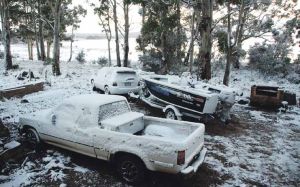 Presented from Issue 109, April 2014
Presented from Issue 109, April 2014
Post-Christmas has me focussed on the Derwent’s big black bream more often than not these days and given my proximity to the river its little wonder that is the case. In a busy time poor world the ease one can achieve a few hours at the drop of a hat it’s a quick release to clear the mind. But come April the true trout angler inside always sees me looking to the highlands for a couple of late season fixes on the trout.
- Written by Stephen Smith - Rubicon Web and Technology Training
- Parent Category: Articles
- Category: Trout Fishing
- Hits: 5507
Read more: The end is near - Late season trout tactics - Justin Causby
Presented from Issue 109, April 2014
An excerpt from Origins of the Tasmanian Trout JEAN WALKER, Honorary Historian to the Southern Tasmanian Licensed Anglers’ Association produced an accurate and concise account of the fascinating story of the first introduction of trout to Tasmania in 1988.
Tasmania’s Inland Fisheries Service has just republished the booklet to celebrate the sesquicentenary (150 years) since the first tiny trout hatched in the Southern Hemisphere. Here are a few snippets from the booklet Origins of the Tasmanian Trout. Contact IFS on 6261 8050 to find a stockist.
TASMANIA’S early settlers were disappointed by the lack of freshwater angling. The only fish native to the inland waters were Australian grayling, small galaxias and in some rivers blackfish. None offered anglers a challenge in fighting qualities.
Bringing trout from England, 12,000 miles away, s seemed an impossible dream. That the dream, became a reality with perseverance, despite failures and setbacks, in 1864.
- Written by Stephen Smith - Rubicon Web and Technology Training
- Parent Category: Articles
- Category: Trout Fishing
- Hits: 3597
Read more: Celebrate The Trout - 150 years in Tasmania - First born - 4 May 1864
Presented from Issue 109, April 2014
An excerpt from Origins of the Tasmanian Trout JEAN WALKER, Honorary Historian to the Southern Tasmanian Licensed Anglers’ Association produced an accurate and concise account of the fascinating story of the first introduction of trout to Tasmania in 1988.
Tasmania’s Inland Fisheries Service has just republished the booklet to celebrate the sesquicentenary (150 years) since the first tiny trout hatched in the Southern Hemisphere. Here are a few snippets from the booklet Origins of the Tasmanian Trout. Contact IFS on 6261 8050 to find a stockist.
TASMANIA’S early settlers were disappointed by the lack of freshwater angling. The only fish native to the inland waters were Australian grayling, small galaxias and in some rivers blackfish. None offered anglers a challenge in fighting qualities.
Bringing trout from England, 12,000 miles away, s seemed an impossible dream. That the dream, became a reality with perseverance, despite failures and setbacks, in 1864.
- Written by Stephen Smith - Rubicon Web and Technology Training
- Parent Category: Articles
- Category: Trout Fishing
- Hits: 4384
Read more: Celebrate The Trout - 150 years of trout in Tasmania - First born - 4 May 1864
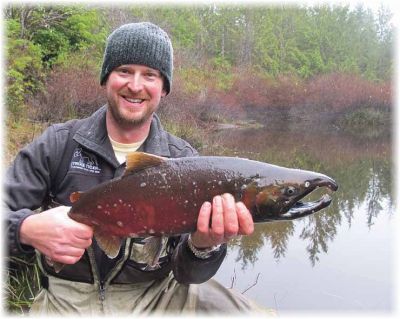 Presented from Issue 108, February 2014
Presented from Issue 108, February 2014
Michal Rybka shares some useful trout techniques that he discovered on a recent trip to the Canadian wilderness.
Introduction
For the third time now, I have been fortunate enough to fish for trout and salmon in British Columbia, Canada.
The most recent trip was certainly the most enlightening, with lots learned. My experience started when I walked into one particular tackle store in the city of Vancouver. While the size of the shop was the first thing I noticed, I was more intrigued by what was on the shelves!
- Written by Stephen Smith - Rubicon Web and Technology Training
- Parent Category: Articles
- Category: Trout Fishing
- Hits: 5238
 Presented from Issue 108, February 2014
Presented from Issue 108, February 2014
Michal Rybka shares some useful trout techniques that he discovered on a recent trip to the Canadian wilderness.
Introduction
For the third time now, I have been fortunate enough to fish for trout and salmon in British Columbia, Canada.
The most recent trip was certainly the most enlightening, with lots learned. My experience started when I walked into one particular tackle store in the city of Vancouver. While the size of the shop was the first thing I noticed, I was more intrigued by what was on the shelves!
- Written by Stephen Smith - Rubicon Web and Technology Training
- Parent Category: Articles
- Category: Trout Fishing
- Hits: 4920
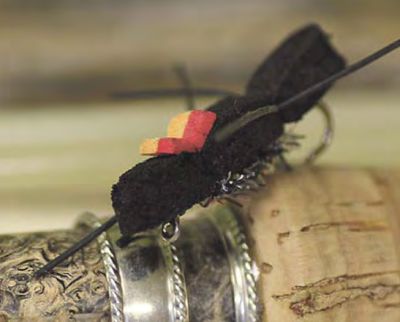 Presented from Issue 107, December 2013
Presented from Issue 107, December 2013
What a crazy start to the 2013 fishing season it has been. Rain, wind, lots of snow and then just for something a bit different we had some rain, wind and more snow! Rivers have more or less been flooded and dirty since July, the lakes have been blanketed in that white stuff for a lot of the time and the wind, well let’s not get started about that god forsaken wind. No word of a lie, it’s been doing my head in. Even contemplated selling all my fly gear and taking up a new hobby, for a brief second!
- Written by Stephen Smith - Rubicon Web and Technology Training
- Parent Category: Articles
- Category: Trout Fishing
- Hits: 4986
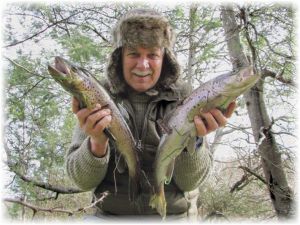 Presented from Issue 106, October 2013
Presented from Issue 106, October 2013
The way many start trout fishing is with a cheap little rod and a few worms. Bait fishing is one of the most enjoyable ways of fishing and often the least expensive too - no matter if it is trout - or from a jetty fishing for salt water species.
This article is on the simple basics of bait fishing for trout. There are several methods used to catch trout, and most novice trout anglers begin by learning to catch trout on light spinning tackle and bait fish first, before moving on up to the more advanced methods of trout fishing like spinning with spinners, hard body and soft plastic lures.
- Written by Stephen Smith - Rubicon Web and Technology Training
- Parent Category: Articles
- Category: Trout Fishing
- Hits: 11564
Read more: Trout on bait - Adrian WebbTrout on bait - Adrian Webb
Presented from Issue 105, August 2013
For those of those of us that don’t bother to fish all that much on the waters that are open all year the closed season takes a toll. You spend the cold winter months sorting out and cleaning all your tackle, doing the necessary maintenance on the boat and restocking the fly boxes with all the favourite patterns and no doubt some fancy new ones.
- Written by Stephen Smith - Rubicon Web and Technology Training
- Parent Category: Articles
- Category: Trout Fishing
- Hits: 4791
Presented from Issue 105, August 2013
Christopher Bassano fishes over 250 days a year. This interview was recorded just before he headed off to fish for Australia in the World Fly Fishing Championships in Norway 14-17 August 2013.
I live on a small stream and at the start of the season I like to go off on a bit of a discovery mission and fish the headwaters of the creeks and rivers I feel an affinity with.
These small rivers include the St Pats, Meander, Forester, Little Forester and others. The further up you go on these rivers the clearer and lower the levels. They are often less affected by the rain and runoff and you get some good opportunities. Get as close to the source as you can and you will find some good dry fly fishing. Don’t limit yourself to those I have mentioned. Most headwaters will hold trout.
- Written by Stephen Smith - Rubicon Web and Technology Training
- Parent Category: Articles
- Category: Trout Fishing
- Hits: 10759
Read more: Tiny creeks and sea run trout - Christopher Bassano
Presented from Issue 105, August 2013
Bob is a professional fishing guide and guides for trout and estuary species. Check him out at www.fishwildtasmania.com
There are several things we look for in our early season trout waters. It is still winter and cold, so some of the things to consider are: Altitude as this dictates the water temperature and therefore feeding activity. Food for the fish. Availability of trout food is generally dictated by the quantity and quality of weed beds.
Quantity of fish.
Three waters which I believe fit all three requirements are:
- Written by Stephen Smith - Rubicon Web and Technology Training
- Parent Category: Articles
- Category: Trout Fishing
- Hits: 11194
Current TFBN
Click above for current issue content. The current issue of TFBN is extensive and topical. In Tackle Stores, Newsagents and by subscription.
Delivered to your door for $48 for 2 years (8 issues). To subscribe, send Mike $48 via www.paypal.com.au . (Basic instructions are here) The email is at Contact Us. Your address will be included from PayPal.
Or phone Mike with your c/c handy on 0418129949
Please ensure your details are correct, for Mike to organise delivery.
TFBN Newsletter Sign up Form
Why not submit an article ?
When you have finished for the day, why not have a brag about the ones that didn't get away! Send Mike an article on your fishing (Click here for contact details), and we'll get it published here. Have fun fishing - tasfish.com
Category Descriptions
Here is a list of all of the Article Categories. The number in Brackets, eg (13) is the number of articles. Click on Derwent River and all articles relating to the Derwent will be displayed in the central area.
Articles by Category
-
Rivers (3)
-
Saltwater and Estuary Fishing (149)
-
Kayak Fishing (34)
-
Lakes (1)
-
Great Lake (62)
-
Lake Leake (52)
-
Woods Lake (16)
-
Lake Augusta (11)
-
Huntsman Lake (13)
-
Lake Pedder and Gordon (10)
-
Lake Dulverton (5)
-
Lake Crescent (6)
-
Tooms Lake (10)
-
Lake Mackintosh (2)
-
Lake Barrington (5)
-
Little Lake (8)
-
Meadowbank Lake (5)
-
Lake King William (7)
-
Lake St Clair (2)
-
Western Lakes (12)
-
Arthurs Lake (35)
-
Lake Echo (7)
-
Four Springs (54)
-
Lake Sorell (7)
-
Lake Burbury (6)
-
Other Lakes (57)
-
Brushy Lagoon (18)
-
Little Pine Lagoon (5)
-
Penstock Lagoon (16)
-
Brumbys Creek (7)
-
-
Events (48)
-
Estuary Fishing (0)
-
Coastal Catches (46)
-
Super Trawler (46)
-
IFS, DPIPWE, MAST and Peak Bodies (435)
-
Commercial Interests (98)
-
Other (24)
-
TFBN Back Issues (8)
-
Fly Fishing (67)
-
Trout Fishing (250)
-
Meteorology and Weather (8)
-
Jan’s Flies (50)
-
Tuna Fishing and other Game Fishing (86)
-
Cooking Fish (19)
-
Fishing Information (1)
-
Fishing Books (8)
-
Videos (5)
-
Tackle, Boats and other Equipment (146)
-
World Fly Fishing Championship 2019 (2)
Popular Tags
windyty.com
Visit https://www.windyty.com/
Rubicon Web and Technology Training
Hello everyone, I thought it would be a good time to introduce myself.
My name is Stephen Smith and I have been managing the website tasfish.com since May 2009.
It has been an epic journey of learning and discovery and I am indebted to Mike Stevens for his help, support and patience.
I am developing a new venture Rubicon Web and Technology Training ( www.rwtt.com.au ). The focus is two part, to develop websites for individuals and small business and to train people to effectively use technology in their everyday lives.
Please contact me via www.rwtt.com.au/contact-me/ for further information - Stephen Smith.
From the Archives ... (last chance)
Atlantic salmon the hard way
Atlantic salmon the hard way
Scott McDonald
The first Atlantic salmon eggs used to begin Tasmania's Atlantic salmon aquaculture industry were introduced into Tasmania in 1984. From these humble beginnings a valuable Tasmanian industry has evolved with a worldwide reputation for having a premium disease free product. This industry provides a spin off to all anglers in the form of regular escapes of salmon from the farms.



